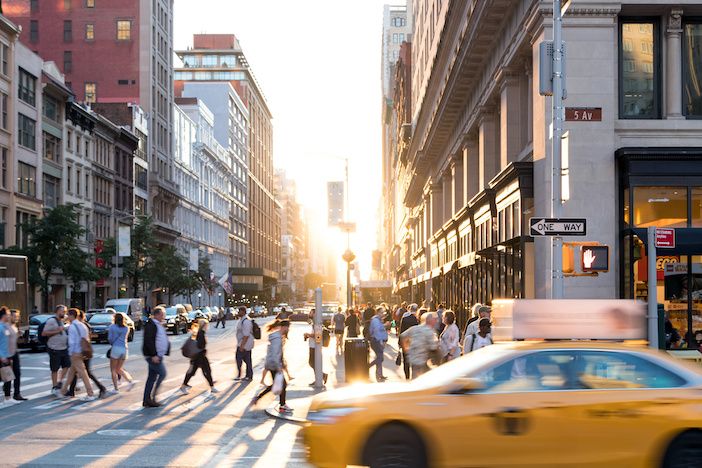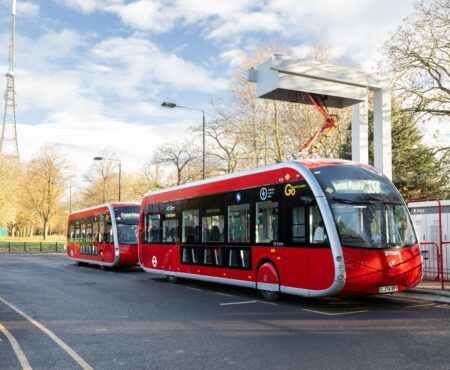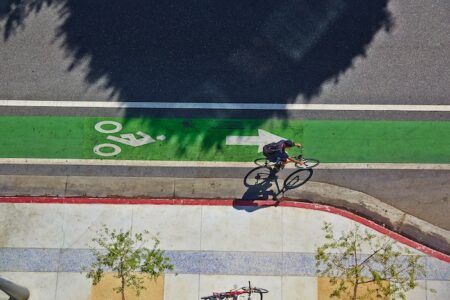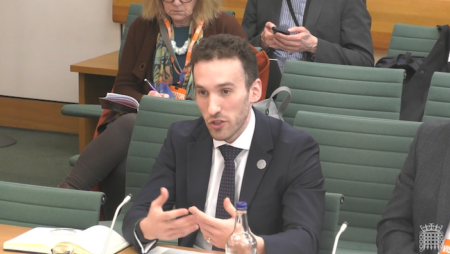Transportation analytics specialist StreetLight Data has published new data showing that there has been a decrease in active travel in the USA since 2019, despite brief upticks during the pandemic.
The information, published in a new eBook Walking In America: Metro & Statewide Pedestrian & Mode Share Trends, delves into recent data regarding walking and active mode share across the Top 100 largest US metros, and will be of immense interest to transportation planners nationwide.
Nationally, active transportation, encompassing walking and biking trips, accounted for 10% of trips in 2022, down from 14% in 2019. Despite this, there’s a noticeable rise in biking trips while pedestrian activity is dwindling as a portion of overall trips.
Between 2019 and 2022, daily walking trips in the US decreased by 36%. Alarmingly, pedestrian fatalities rose during this period, as highlighted in the Governors Highway Safety Association’s report on Pedestrian Traffic Fatalities by State.
While walking has begun stabilizing nationally since 2021, certain metro areas experienced an upswing in 2022. This surge primarily stems from densely populated downtown areas across the country. The decline in pedestrian activity is steeper in regions with harsher weather conditions, indicating that the reduction primarily affects “utility trips” (e.g., walking for lunch during work) rather than recreational walks.
Statewise, every state witnessed a decline in walking activity between 2019 and 2022, with New Jersey registering the smallest decrease at 29%. States like Washington, DC, New York, New Jersey, and Nevada exhibit the highest per capita walking activity, while Alabama, Arkansas, and Tennessee rank lowest. In the 25 most populous states, New York, New Jersey, and Massachusetts lead in the share of trips via active transportation. Conversely, Louisiana, Tennessee, and Alabama record the smallest share.

All major metros experienced a drop in walking activity between 2019 and 2022, with reductions ranging from 23% to 49%. Notably, milder climate metros faced comparatively smaller declines. However, compared to 2021, 18 metros observed an increase in walking activity in 2022, with California metros dominating nine out of the top ten spots. New York City ranked 10th.
Per capita, New York City led in walking activity for 2022, followed by Orlando, Las Vegas, San Diego, and Boston, with Los Angeles securing the sixth spot. Among the 25 largest metros, San Francisco and Boston trailed NYC in the share of trips via active transportation, while Houston, Dallas, and Atlanta saw the least active transportation usage.
Laura Schewel, CEO of StreetLight and VP of Transportation Software at Jacobs, says: “Historically, obtaining data on active transportation modes like cycling and walking has been challenging. That’s why this report is crucial. Localities can leverage these trends to reallocate their resources effectively. The substantial changes observed, particularly between urban and suburban areas, suggest that investing in pedestrian infrastructure beyond traditional boundaries could yield substantial benefits and necessitate updating assumptions about increasing walking.”
The StreetLight InSight platform revolutionizes data into comprehensive, normalized travel patterns, empowering planners and transportation professionals with data-driven insights for projects of any scale or scope.





